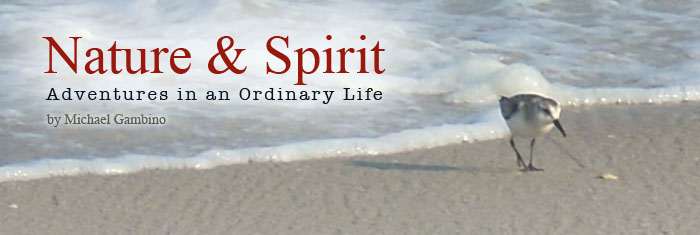Plant Profile: Skunk Cabbage
 Sunday, March 28, 2010 at 06:59PM
Sunday, March 28, 2010 at 06:59PM  "Skunk Cabbage Flower and Leaves" © Michael GambinoTHIS PLANT IS FAMILIAR TO MANY HIKERS AND WALKERS, yet is likely not getting a second look. This is too bad because Skunk Cabbage is a uniquely fascinating plant. It may be that its location deters people from getting up close – it is a lover of wet places, swamps, and streams. Or perhaps it’s because the flower is just not as showy as other emerging spring blooms for people to stop and admire it. Then again, it could be the name. And handing someone a bouquet of freshly picked flowers that reek of a pungent skunk-like odor just isn’t going to work as well as a bunch of smiling yellow daffodils or cream white lilies!
"Skunk Cabbage Flower and Leaves" © Michael GambinoTHIS PLANT IS FAMILIAR TO MANY HIKERS AND WALKERS, yet is likely not getting a second look. This is too bad because Skunk Cabbage is a uniquely fascinating plant. It may be that its location deters people from getting up close – it is a lover of wet places, swamps, and streams. Or perhaps it’s because the flower is just not as showy as other emerging spring blooms for people to stop and admire it. Then again, it could be the name. And handing someone a bouquet of freshly picked flowers that reek of a pungent skunk-like odor just isn’t going to work as well as a bunch of smiling yellow daffodils or cream white lilies!
Nevertheless, Skunk Cabbage presents a beautiful flower in its own right. This perennial plant is often considered one of the first signs that Old Man Winter’s days are numbered. Yet its tightly rolled leaf shoots and flower buds are already rising from the muck in September. They endure the frost, snow, and ice awaiting the end of winter. Once the temperatures are above freezing, the flower buds begin to swell. One marvelous adaptation of Skunk Cabbage is the ability to raise its temperature to just over 70 degrees Fahrenheit. This is warm enough to melt the snow and ice around them allowing more access to sunlight and pollinators that are emerging from dormancy. The heating function may also allow the release of chemicals that call these insects. Once pollinated, the heating helps to accelerate the ripening of fruit. It is thought that the honeybees and flies take advantage of the plant’s warmth on cold days before buzzing off to the next flower.
Similar to the Jack-in-the-pulpit plant, the Skunk Cabbage flower has a hooded spathe covering the male and female flowers within. Passing through a swampy area in summer and seeing a great expanse of huge, green skunk cabbage leaves add to the beauty and mystery of such a habitat. No doubt the low "canopy" created by these leaves helps to slow evaporation of moisture from the swamp and creates a habitat for insects, birds, and amphibians. When crushed, all parts of the plant release their pungent fragrance. It is not a wild edible plant (except to slugs), though Native Americans and early physicians used the plant medicinally to treat whooping cough, convulsions, epilepsy, asthma, and to reduce swelling. (Click to enlarge images below).




Reader Comments (1)
This is a beautiful site! So well done as usual! I look forward to seeing it again!